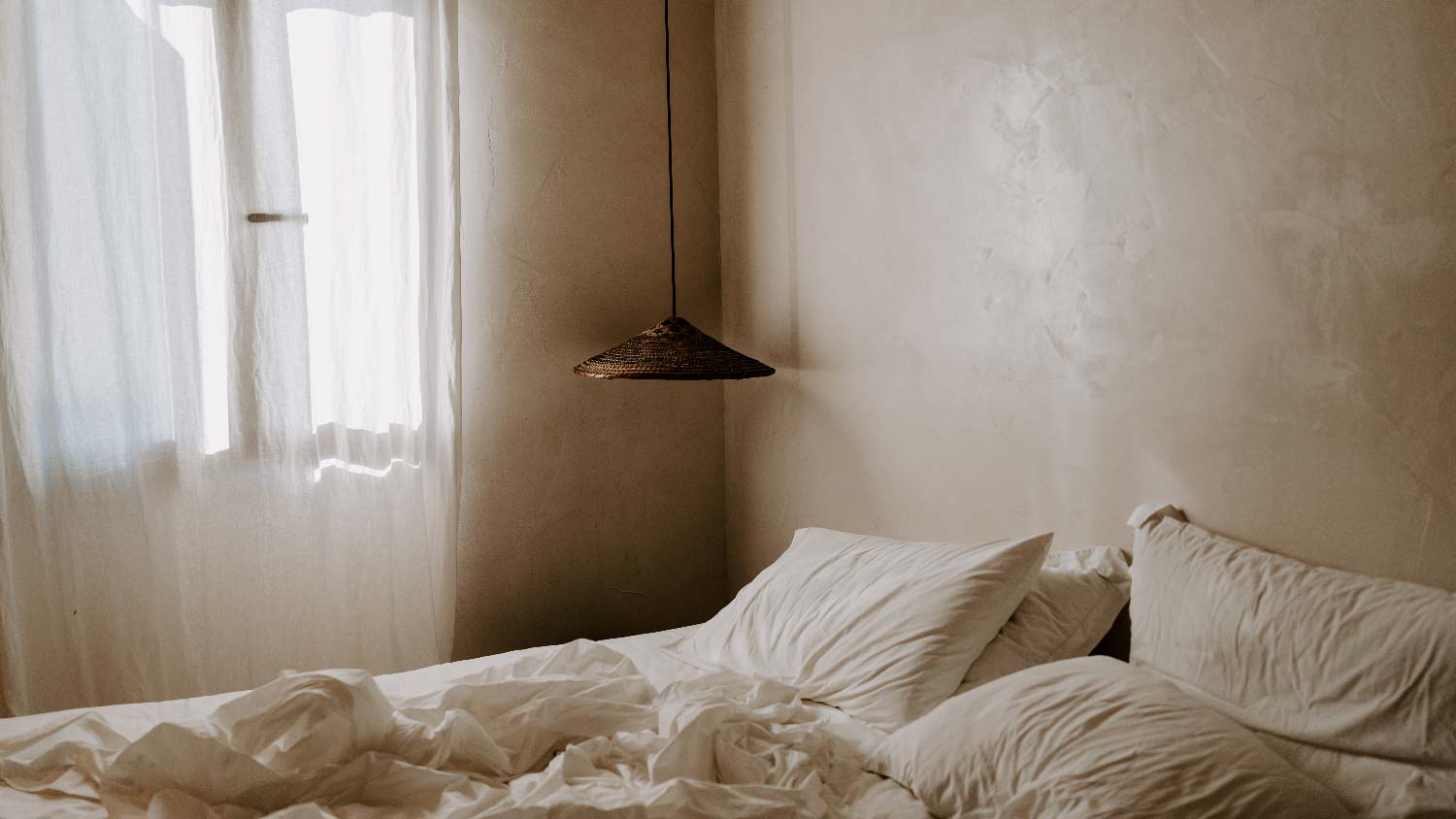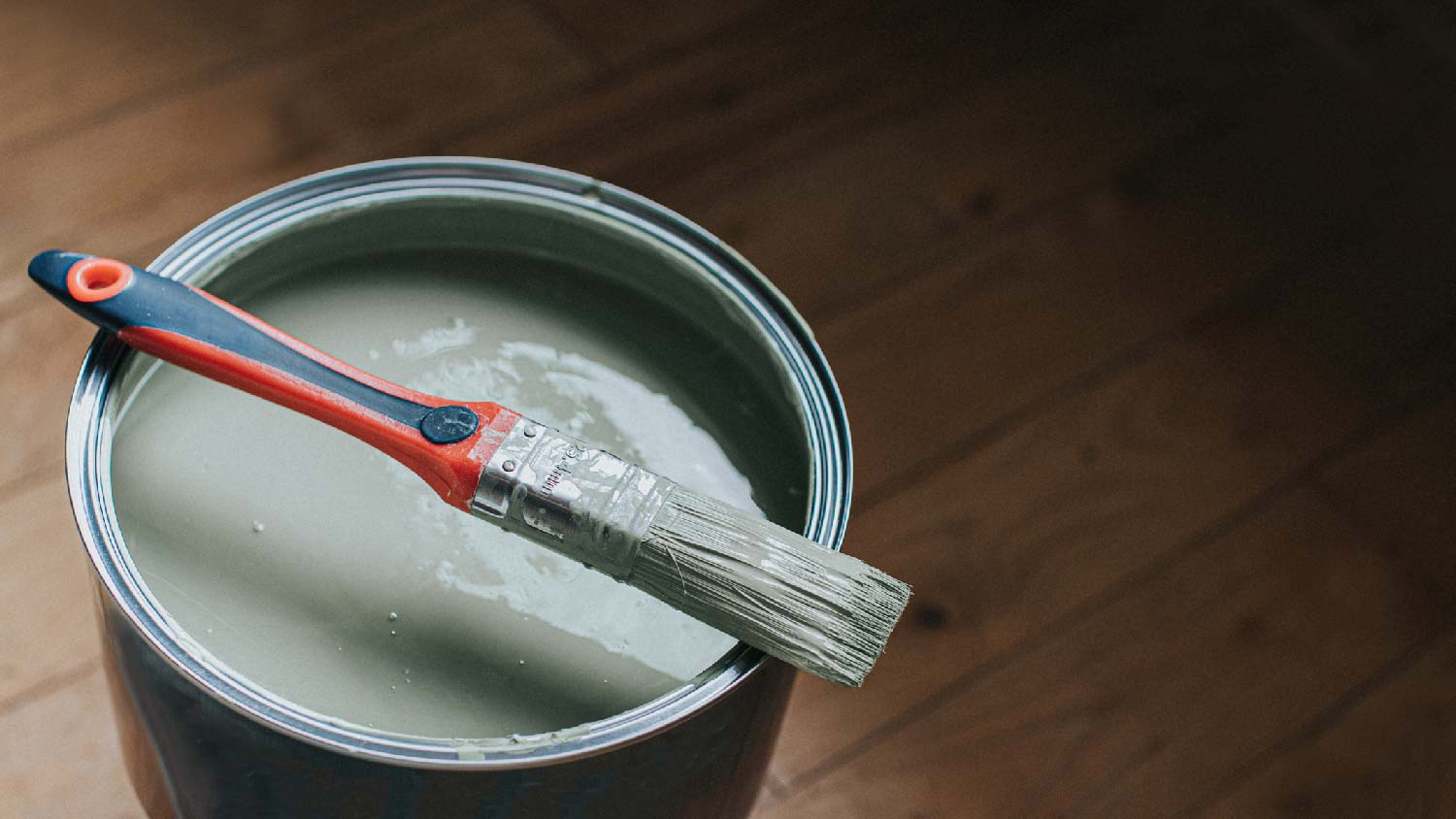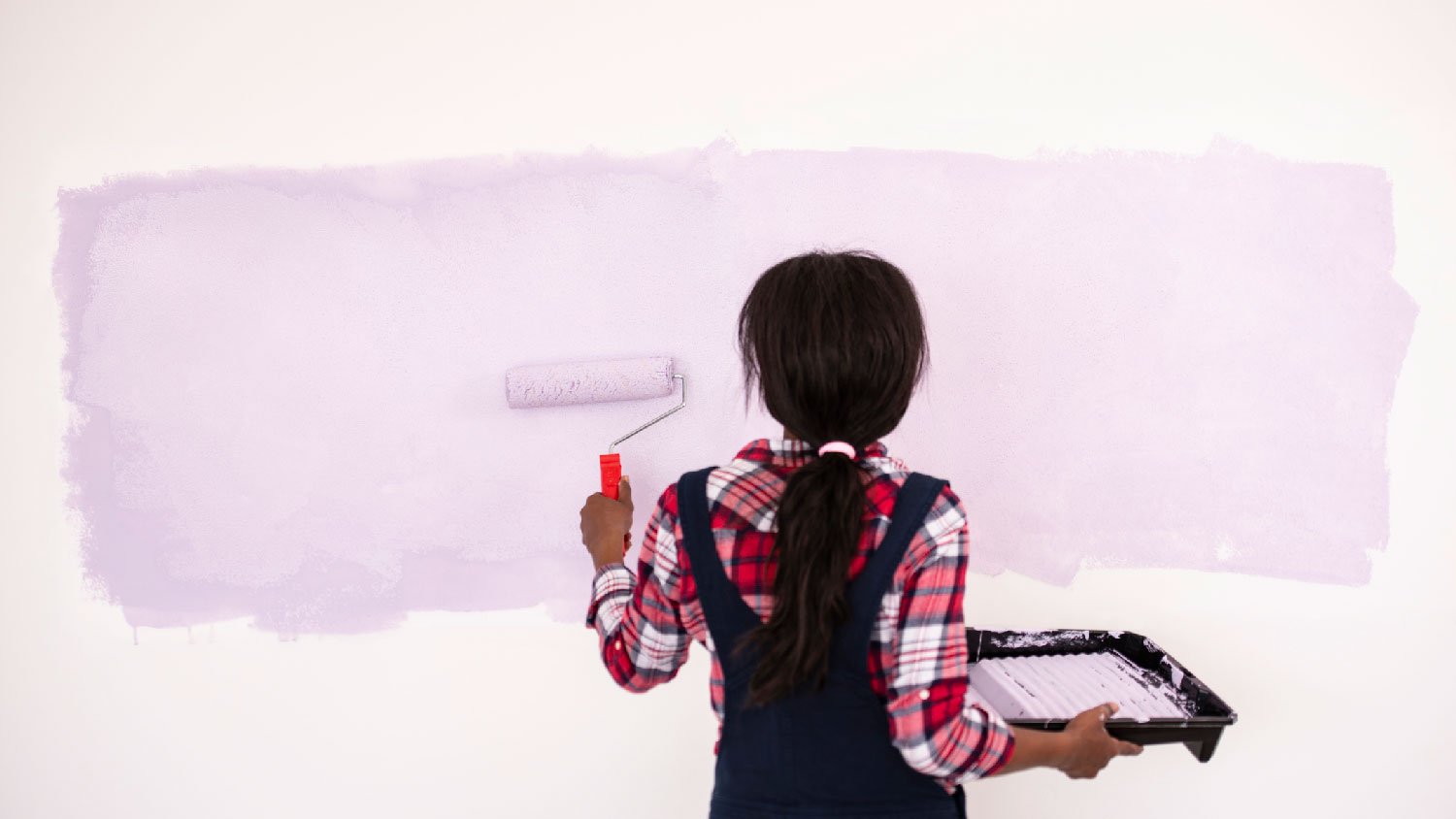
The cost to paint the interior of a house in New York, NY depends on size, layout, type of surface, and more. Learn what factors can influence your total in this guide.
Confidently tackle refinishing your exposed brick, plaster, or stucco


Limewash is more transparent than paint.
Paint comes in a wider variety of colors than limewash.
Limewash is more expensive than regular paint.
Limewash is more breathable than paint.
Choosing the right finish to cover your drywall, plaster, stucco, brick, stone, slate, or concrete wall can be tricky with so many options. Still, we’ve got the information you need to confidently select the right coating for your job and tell the difference between breathable, simple limewash and vibrant, full-coverage paint. Whether you plan to wield the brush yourself or hire a local painting pro, here’s your guide to choosing limewash vs. paint.
The biggest difference between limewash and paint is in their chemical makeup and ingredients. Limewash is made from lime and water, making it more breathable than most paints and more see-through, while paint is usually made from a combination of plastics, acrylic, or latex.
Limewash and paint also differ in terms of coverage, cost, safety, and more.
| Characteristic | Limewash | Paint |
|---|---|---|
| Coverage | Partly translucent | Full coverage |
| Color | White | Any color |
| Cost | $1,800–$11,300 | $6000–$7,500 |
| Breathability | Breathable | Not breathable |
| Ingredients | Lime | Varied |
| Interior/Exterior | Both | Both |
| Safety | Mostly safe | Contains VOC’s |
Planning small painting and staining projects is fairly straightforward and rarely an urgent need. According to Angi data, 34% of homeowners report that their timing for these projects is flexible, which makes sense considering the scope of the job. About 14% of respondents are okay with completing the project in more than two weeks. Even if you’re not sure whether to use regular paint or limewash, you can still speak to a pro to get advice and plan out your project.

Paint and limewash differ in that limewash comes in only one color palette, while paint can be almost any color. Their coverage also varies, with limewash being more translucent and paint more opaque.
Limewash is only available in white, light gray, or off-white. With just two ingredients, its composition limits the selection of colors. When applied to brick or stone, it will often take on some of the material's color, so keep that in mind.
Paint is available in almost any color you can think of for your desired look. Want to repaint your brick a bright white color? You got it.
Limewash is thinner and more translucent than paint. It will lighten and whiten the surface it’s applied to, but some of the existing colors will show through.
Paint is opaque and will completely cover over your wall, showing only the color of the paint when it’s finished. However, you might have to paint multiple coats for a fully opaque look.
Since limewash is made from lime that comes from limestone, it has a flat texture with no gloss when applied and will take on the texture of your wall for the most part.
Paint comes in a variety of sheens, from flat to glossy. The texture on the surface of your wall will still come through once the paint is applied.

Limewashing your house costs between $1.50 and $5.00 per square foot or about $1,500 and $6,700 per house. A regular paint job will cost between $1.50 and $4.00 per square foot or about $1,810 to $4,505 per house. Although limewash lasts longer, it can be more expensive to apply than regular paint because of the skills necessary and the cost of materials.
Limewash lasts longer than paint because it doesn’t peel or flake off the surface, while paint must be redone more frequently. Let’s dig into the differences between limewash and paint regarding durability.
Limewash penetrates the wall's surface, allowing the color to soak into the material like a dye. This makes it long-wearing because it can’t chip or peel. A coat of limewash can last more than 20 years before needing to be reapplied if it’s done correctly, and since it shows the underlying material through the finish, wear on limewash tends to be less evident than wear on paint.
Paint will need to be redone every 10 years or so to keep it looking nice.
There are masonry paints designed to be used on brick, concrete, stucco, or stone that will allow masonry structures to breathe, helping to ensure that the structure can expel moisture when necessary.
Limewash is the most breathable option as a coating, and regular paint is the least. Using a breathable coating will lengthen the life of a masonry structure by keeping its moisture balance on track and allowing for atmospheric changes.

Since limewash is made from two ingredients, lime and water, it tends to be safer than paint. Paint has made strides with lower VOC versions that release less hazardous fumes when drying, but the ingredients it’s made from still tend to emit more harmful fumes than lime.
Limewash is caustic in its wet form with a high pH, so it’s not safe to ingest and can irritate the skin, but it doesn’t release Volatile Organic Compounds while it’s drying, so it’s generally considered to be safer than most paint.
Regular paint is also harmful to ingest and, in some cases, can release Volatile Organic Compounds (VOCs). These compounds can cause dizziness, headaches, and breathing problems in the short term, and long-term exposure can cause liver, kidney, and nerve damage and have been connected to some types of cancer.
While limewash is considered safer than paint and not acutely poisonous if ingested, it can still irritate the skin and cause damage to your eyes if it splashes into them, so use caution around kids and pets.
From average costs to expert advice, get all the answers you need to get your job done.

The cost to paint the interior of a house in New York, NY depends on size, layout, type of surface, and more. Learn what factors can influence your total in this guide.

The cost to paint the interior of a house in Detroit, MI depends on size, layout, type of surface, and more. Learn what factors can influence your total in this guide.

The cost to paint the interior of a house in Indianapolis, IN depends on size, layout, type of surface, and more. Learn what factors can influence your total in this guide.

From stone, tile, wallpaper, or paint, discover different accent wall ideas for your space.

You don't need a professional or an expensive tool to match your wall paint. Learn how to match paint color already on walls with this helpful guide.

A faux wall finish done correctly can transform an entire room. Discover the pros and cons of 15 of the most popular faux painting techniques with Angi.